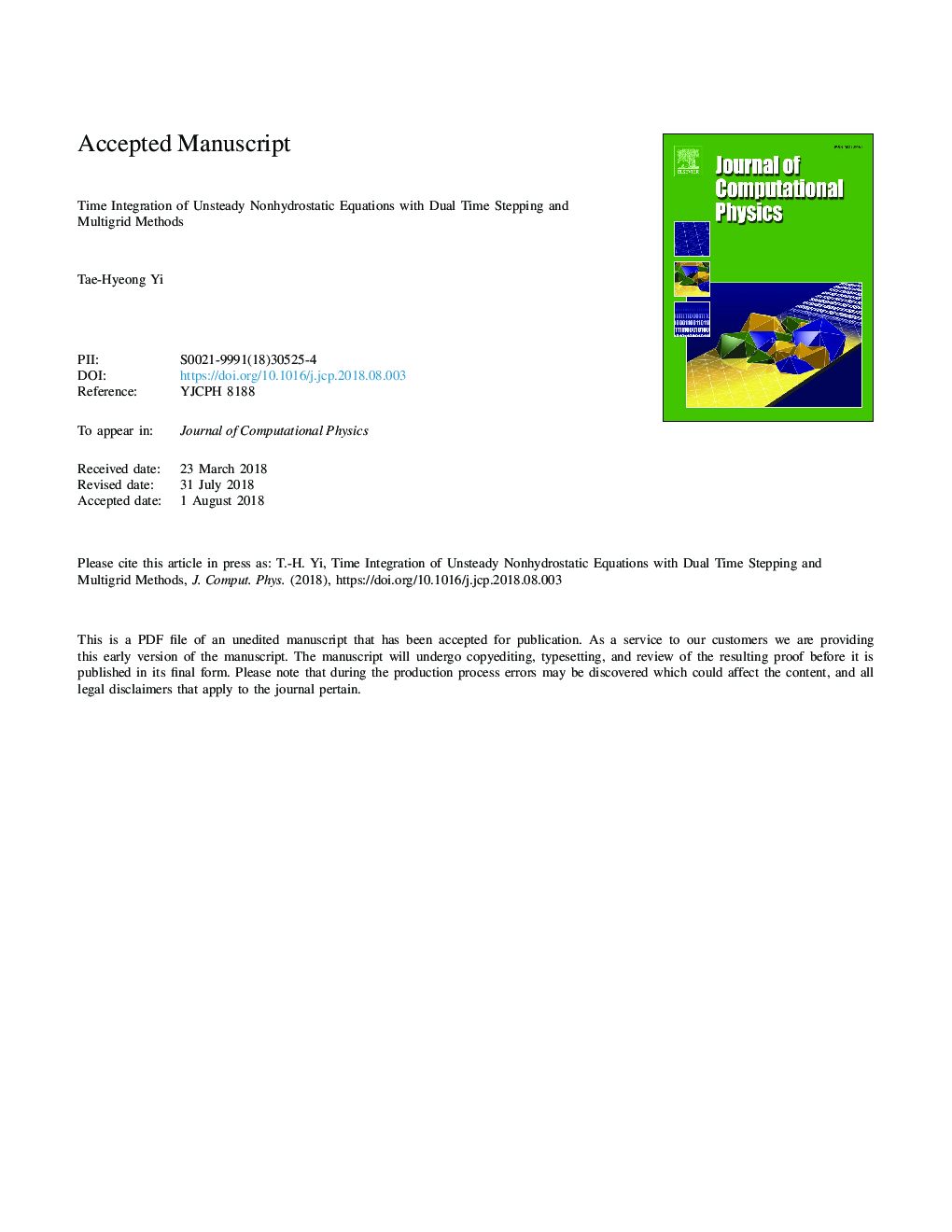| Article ID | Journal | Published Year | Pages | File Type |
|---|---|---|---|---|
| 11002775 | Journal of Computational Physics | 2018 | 37 Pages |
Abstract
A time integration method based on dual time stepping coupled with a multigrid and implicit iterative solver is discussed for overcoming the temporal stiffness associated with modeling unsteady atmospheric flows. Adopting the dual time stepping allows solving an unsteady flow problem as a steady-state one by introducing a pseudo-time derivative into the governing equations. Consequently, the model uses a large time step and leads to a reduction in computational time. In the framework of the dual time stepping, a full approximation storage multigrid and lower-upper symmetric Gauss-Seidel implicit solver are employed to accelerate convergence in a structured, quadrilateral grid. The discretization of a physical-time derivative is based on a second-order backward differentiation formula or a family of singly diagonally implicit Runge-Kutta methods. The spatial terms of nonhydrostatic equations are discretized with a second-order Roe scheme in the finite volume method. To assess the performance of the model in terms of accuracy and efficiency, which are indicated by the normalized error norms and wall-clock time, respectively, three idealized tests are performed with the unsteady flow problems of isentropic vortex, rising thermal bubble and inertia-gravity waves. The results of numerical experiments consistently demonstrate that the dual time stepping coupled with explicit-first, singly diagonally implicit Runge-Kutta and multigrid methods is more efficient than the three-stage, third-order explicit Runge-Kutta method with comparable accuracy. The numerical experiment also indicates that the dual time stepping is more efficient when a stretched grid is employed. The efficiency in the framework of the dual time stepping is dependent on various numerical factors, including a multigrid level and cycle, Butcher coefficients, an implicit solver and a physical-time step.
Related Topics
Physical Sciences and Engineering
Computer Science
Computer Science Applications
Authors
Tae-Hyeong Yi,
